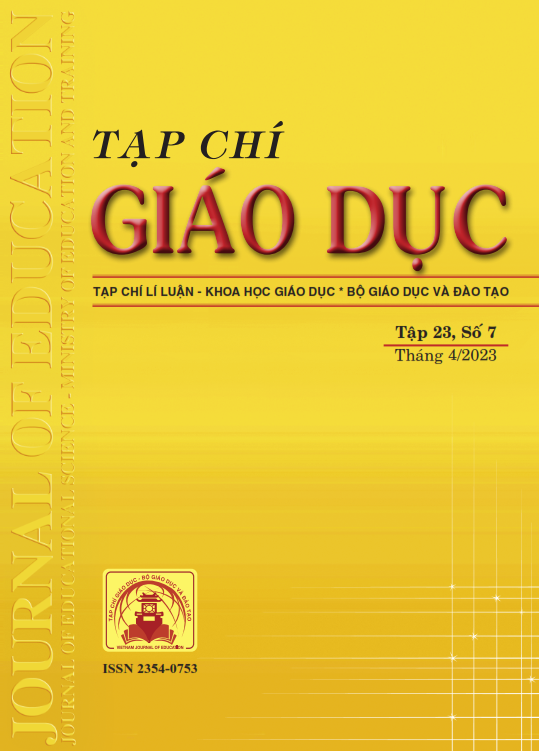Tổ chức dạy học chủ đề “Liên kết hóa học” (Hóa học 10) theo mô hình “Lớp học đảo ngược” nhằm phát triển năng lực tự học cho học sinh
Tóm tắt
The flipped classroom model is one of the methods of organizing combined teaching that has been proven capable of meeting the requirements of teaching innovation. The article focuses on developing a teaching process according to the model of “Flipped classroom”, conducting experimental teaching on the topic “Chemical bonding” at a number of high schools in the suburb of Hanoi city. The research results show that the organization of teaching according to the flipped classroom model with the support of information technology helped promote the learning activities, as the learners actively explored and accessed knowledge through their learning activities. The interaction between learners and the learning environment in order to update and improve knowledge from background to targeted knowledge. The effective teaching organization of the “Flipped Classroom” model has contributed to the development of self-study capacity for high school students in the 4.0 education period.
Tài liệu tham khảo
Akçayır, G., & Akçayır, M. (2018). The flipped classroom: A review of its advantages and challenges. Computers & Education, 126, 334-345.
Baepler, P., Walker, J. D., & Driessen, M. (2014). It's not about seat time: Blending, flipping, and efficiency in active learning classrooms. Computers & Education, 78, 227-236.
Bộ GD-ĐT (2018a). Chương trình giáo dục phổ thông - Chương trình tổng thể (ban hành kèm theo Thông tư số 32/2018/TT-BGDĐT, ngày 26/12/2018 của Bộ trưởng Bộ GD-ĐT).
Bộ GD-ĐT (2018b). Chương trình giáo dục phổ thông môn Hóa học (ban hành kèm theo Thông tư số 32/2018/TT-BGDĐT, ngày 26/12/2018 của Bộ trưởng Bộ GD-ĐT).
Candy, P. C. (1991). Self-Direction for Lifelong Learning. A Comprehensive Guide to Theory and Practice. Jossey-Bass, 350 Sansome Street, San Francisco, CA 94104-1310.
Graziano, K. J. (2017). Peer teaching in a flipped teacher education classroom. TechTrends, 61, 121-129.
Love, B., Hodge, A., Corritore, C., & Ernst, D. C. (2015). Inquiry-based learning and the flipped classroom model. Primus, 25(8), 745-762.
Nguyễn Văn Đại, Đào Thị Việt Anh (2019). Xây dựng khung năng lực tự học của học sinh trung học phổ thông trong dạy học Hóa học theo mô hình blended learning. Tạp chí Giáo dục, 458, 45-50.
Staker, H., & Horn, M. B. (2013). Blended Learning in the K-12 Education Sector. Blended Learning, Routledge.
Talley, C. P., & Scherer, S. (2013). The enhanced flipped classroom: Increasing academic performance with student-recorded lectures and practice testing in a “flipped” STEM course. Journal of Negro Education, 82(3), 339-347.
Taylor, B. (1995). Self-Directed Learning: Revisiting an Idea Most Appropriate for Middle School Students.
Tải xuống
Đã Xuất bản
Cách trích dẫn
Số
Chuyên mục
Giấy phép

Tác phẩm này được cấp phép theo Ghi nhận tác giả của Creative Commons Giấy phép quốc tế 4.0 .












